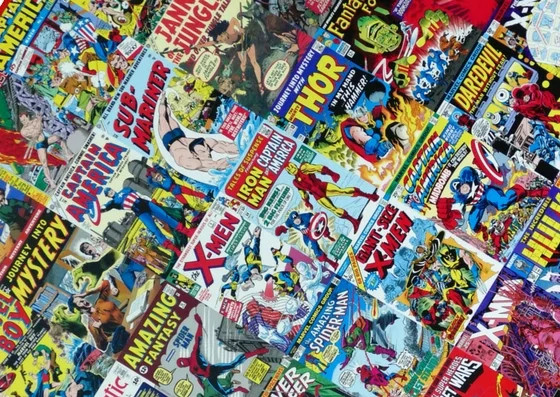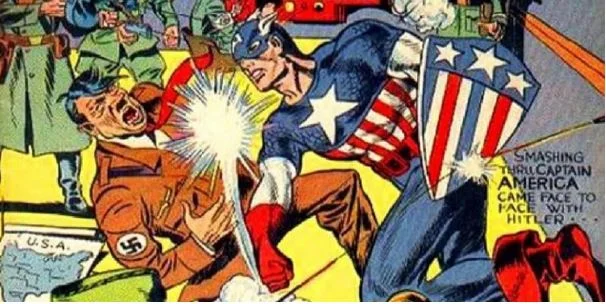The Road to Infinity War: Lesson One
By TC Phillips
Unless you’ve been living in the Negative Zone (it’s a comic book thing), you may have heard about a (no-so) little movie coming out next month called Avengers: Infinity War. And, unless you have entirely missed out on the privilege of having your very own comic book nerdling in your life, you may have figured out that this multi-multi- multi-million dollar production is kind of a big deal. Like a “we’ve just spent the last 10 years, a couple of billion dollars and 18 other movies all building up to this one climatic mega event of spectacular proportions” kind of a big deal.
If you’re the sort of person who finds themselves likely to ask “Is Batman in this one?" while waiting in line at the cinema (and braving the condescending stares of a dozen nerds just itching to lecture you in the difference between Marvel and DC comics and how you don’t deserve a ticket to the cinematic extravaganza you’re about to witness), there are probably a few things you need to bone up on before you walk in to this one.
And, no.
Batman is not in this one. And Superman and his dodgy CGI upper lip isn't either.
Okay, are you ready to get schooled Marvel Cinematic Universe style?
No? Too bad, strap in, grab a coke and a bucket of popcorn and prepare for everything they never taught you in school, but is far more interesting the quadratic equations...
Lesson 1: Marvel movies and studio rights
Captain America's first appearance in 1941 predated the USA's involvement in World War Two.
Marvel Comics originally kicked off in 1939 under the name Timely Comics, and one of their first flagship heroes Captain America first debuted at the height of WWII in 1941. This was a full year before the US even entered the war, and Joe Simon and Jack Kirby had good ol’ Cap socking Hitler right on the jaw before a single US soldier ever set foot on the front line.
Following the end of the war, interest in comics flagged. Timely Comics was renamed for a brief time as Atlas Comics until the early sixties when living legend Stan Lee revitalised the medium by introducing characters intended to appeal to an older audience. Under the newly rebranded Marvel Comics, Lee introduced a slew of classic characters to the world including The Fantastic Four, Spider-Man, Iron Man, The Hulk, Black Panther, Doctor Strange, The X-Men, Daredevil, and the world became a much better place. Thanks Stan, there’s a reason he’s THE MAN and deserving of every brilliant film cameo to date.
However, in the ‘90s everything seemed destined to come crashing to a halt, when a score of Marvel artists left to start their own label Image Comics. Marvel was facing bankruptcy in 1996, and as assets were being sold off left, right and centre, so too did the film rights to several of their biggest characters. 20th Century Fox stepped in a nabbed rights to the X-Men, culminating in the X-Men film franchise which turned Patrick Stewart into Professor X and Hugh Jackman into Wolverine. They also acquired The Fantastic Four, culminating in two campy movies starring Jessica Alba as the Invisible Woman followed by a disastrous reboot which is only worth watching to see exactly how bad a movie it actually was – IT WAS BAD, poking your eyes out with toothpicks type bad. Later Fox would also score big with Deadpool, who fell in under the licensing arrangement for the X-Men. Needless to say, these films are not part of the official Marvel Cinematic Universe (MCU).
While Fox got their mutant on, rival studio Sony swooped in and picked up the rights to the number one Marvel favourite Spider-Man. This would eventually give us Tubby Maguire’s trilogy under the unlikely direction of Evil Dead creator Sam Raimi – the first two movies of which would still be held up as some of the best Spidey films to-date. (The third was kind of a clusterf#$k and Raimi himself quit, making way for less successful reboot with Andrew Garfield in the title role.)
Now you might be thinking Hey, didn’t Spidey show up in Captain America: Civil War and then had his own movie with a much younger and really hot Aunt May? Well yes, thanks to some creative contract negotiations backed by Disney’s (Marvel Studio’s current owner) unending bank accounts. They struck a deal whereby the MCU could use Spidey in their crossover movies, and Sony would get all box office profits for the standalone movies while Disney pocketed all the merchandising. After all, once all is said and done these films are just multi-million dollar toy commercials.
In 2004 a reorganised Marvel Entertainment Group sourced financing worth over $500 million to make their own movies based around 10 of their original characters to which they still held the rights, including Captain America and the Avengers. It was a bit of a gamble, because the original deal meant that if the movies didn’t succeed they would lose those movie rights too, and it’s not like the characters they were looking at were the cream of the comic book crop to begin with.
This ultimately led to the first movie in the MCU: Iron Man played by a perfectly cast Robert Downey Jr,, who now seems indistinguishable from the role of Tony Stark which he has shaped over the past decade. What’s more, the appearance of Samuel L Jackson as SHEILD director Nick Fury in the first MCU post-credit scene hinted at the start of a much larger, interconnected film universe. The gamble paid off, and in 2009 Disney swooped in to buy Marvel studios and their original $500 million debt for $4 billion US. The future of the MCU was secured. Iron Man had moved from being a B-grade comic book character few people knew to a true cultural icon, and he would usher the rest of his super friends into a cinematic experiment that all other film studios would envy and repeatedly fail to emulate.
That’s enough for this week’s lesson, next week is Lesson Two: Meet the Avengers. For homework, go and watch the original Iron Man.

